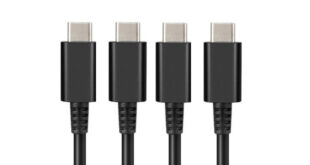While the biggest talking point of Apple’s latest press conference was undoutedly the new Apple TV, there was another new feature that will also be of interest to developers.
Debuting with the iPhone 6S, 3D Touch introduces pressure-sensitive input for apps – and video games are poised to benefit most from this new technology, according to Pixel Toys’ co-founder and CEO Andy Wafer.
Wafer was one of the many developers that took to the stage during Apple’s press conference, demonstrating the new tech through his studio’s upcoming game Warhammer 40,000: Freeblade. We asked him why he thinks 3D Touch is potentially revolutionary for mobile games.
For those who somehow missed Apple’s announcement last month, what is 3D Touch? How does it work?
3D Touch is a new screen technology that Apple developed for the iPhone 6S and detects variable pressure placed on the screen. It works by using capacitive sensors, which can measure microscopic changes in distances between the backlight and the cover glass as pressure is applied.
So what opportunities does that offer developers? What does it enable them to do?
It means we now have a much more sophisticated method of input detection. Ever since the launch of the first iPhone we’ve been limited to inputs on a 2D plane. Now we have a 3D plane; it’s not just a digital press down, on or off – it’s completely analogue. The more you press down, the more it detects, and it’s incredibly precise.
So now we have the equivalent of the analogue buttons or triggers on console controllers. That’s game-changing for mobile. It’s a leap forward and there are immediately lots of obvious applications to mobile games; applying what’s come before on console, such as pressure-sensitive brakes or accelerator pedals mapped to the analogue triggers in racing games.
3D Touch is the biggest change to happen to touch screens since the first iPhone. I expect we’ll look back in the not too distance future and wonder how we ever used touch screens without it.
When Sony first introduced the Analogue Controller and later DualShock controller for the PS1, it changed console gaming and eventually became standard. 3D Touch has the potential to be even cooler; on a touch screen you’re directly interacting with content. That gives us the opportunity to create innovative gameplay as you’re physically pressing into what you’re interacting with on the screen and this presents new opportunities for gaming that was not possible before on any platform.
"Game-changing"? And I believe you’ve previously described this as “the biggest deal for game developers for ages” – what makes you think this new input technology will have so much impact?
Because it’s the biggest change to happen to touch screens since the first iPhone. I believe it’s a new input method that can really be used to enrich gameplay in ways we haven’t even thought of yet, I expect we’ll look back in the not too distance future and wonder how we ever used touch screens without it.
Could games be the best way to show off 3D Touch?
3D Touch is going to improve the overall experience of navigating and shortcutting across all touch screen applications. I do think games are best placed to show if off, though. Knowing what 3D touch is capable of, I think game developers are going to come up with all sorts of new creative gameplay which incorporates the tech. There’s going to be games that people will want to download just to try out those new types of gameplay, things that will only be possible with 3D Touch.
So how are you implementing 3D Touch in Warhammer 40,000: Freeblade?
Shooting and switching weapons is our core gameplay and players can press into the screen to control how far they want to zoom their weapon sights. The deeper they press, the further the zoom. They can reduce pressure to zoom back out, or hold it at a certain level. If they press down far enough, they will switch to a heavier weapon.
It was actually relatively simple to introduce the technology into our game. The balancing and getting the ‘feel’ right took a bit longer following that initial implementation. There’s quite a lot of precision in the technology, so iteration and refinement takes time.
Have you encountered any limitations to the tech so far? How did you overcome them?
We’ve not really come across any specific limitations. Currently the new haptic feedback isn’t exposed to developers, so that’s something we’d like to see added in the future. There’s some design considerations about how hard a player naturally tries to press when the device is in their hands verses resting on a firm surface like a table. Players seem to naturally press harder if the device is on firm surface, so that’s something we’re looking into now at the balancing stage.
Creating effective tutorials on how to use this new technology may be more complex than implementing the 3D Touch feature itself.
What advice do you have for developers planning to use 3D Touch?
I’m sure developers are going to come up with interesting ways of using it, but it’s worth considering how you’ll teach the player to use 3D Touch in those interactions. Creating effective tutorials on how to use this new technology may be more complex than implementing the 3D Touch feature itself.
How many games/developers do you expect will use 3D Touch in the coming years?
The technology can be used to improve menu shortcuts, that’s something Apple have been keen to demonstrate, and that alone may be reason for it to become standard in games. Gameplay enhancements that use it will be more of personal choice for developers and what works in their games. As the technology becomes more widely adopted I’m sure most professional developers will try something with it at some point.

 MCV/DEVELOP News, events, research and jobs from the games industry
MCV/DEVELOP News, events, research and jobs from the games industry



